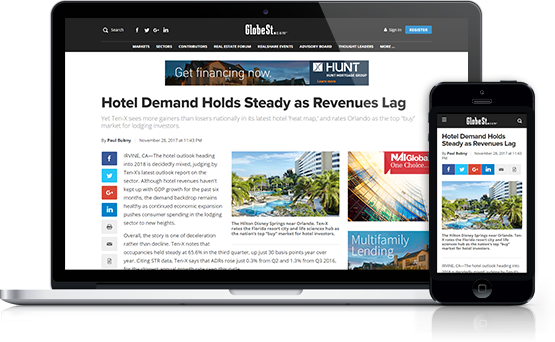WASHINGTON, DC-In a competitive job market, employers pay close attention to workplace trends that might help them attract and retain the best talent. Finding office space with natural light and a flexible layout allows companies to design an environment that will prove attractive both to employees and to potential clients. As new offices with shiny amenities that meet these needs come to market, many older buildings are passed over despite their prime location. Building owners are faced with difficult decisions on what can be done to make these properties more productive, a prospect that often requires substantial renovation or outright replacement.
Adaptive reuse can optimize the operational and commercial performance of a building by transforming obsolete spaces to serve entirely new purposes. When office vacancy rates are elevated and urban housing is scarce, refitting less competitive office buildings for residential use can eliminate both problems with a single solution. While it's not the right answer for every property, these conversions can potentially meet a real market need on a considerably faster timeline than demolishing the old building to make way for entirely new construction.
Structural Challenges
Some of the same factors that make a building attractive for office use can present challenges to designing an appealing residential community. A typical older office building is 240 feet long and 120 feet deep with a rectangular central core for mechanical, electrical, restrooms and elevator support. In comparison, a standard double-loaded corridor in an apartment building is only 65-70 feet deep. Placing apartments along the perimeter windows of the office building and then stretching them to line up along a central hallway would create uncomfortably deep apartments without any natural light in the inner rooms. Reducing the depth of the units by adding additional corridors leaves a considerable footprint of internal, windowless space without a straightforward purpose. Finding ways to utilize this inner core efficiently can be a determining factor in deciding if residential conversion is a good fit.
Recommended For You
Want to continue reading?
Become a Free ALM Digital Reader.
Once you are an ALM Digital Member, you’ll receive:
- Breaking commercial real estate news and analysis, on-site and via our newsletters and custom alerts
- Educational webcasts, white papers, and ebooks from industry thought leaders
- Critical coverage of the property casualty insurance and financial advisory markets on our other ALM sites, PropertyCasualty360 and ThinkAdvisor
Already have an account? Sign In Now
*May exclude premium content© 2025 ALM Global, LLC, All Rights Reserved. Request academic re-use from www.copyright.com. All other uses, submit a request to [email protected]. For more information visit Asset & Logo Licensing.









